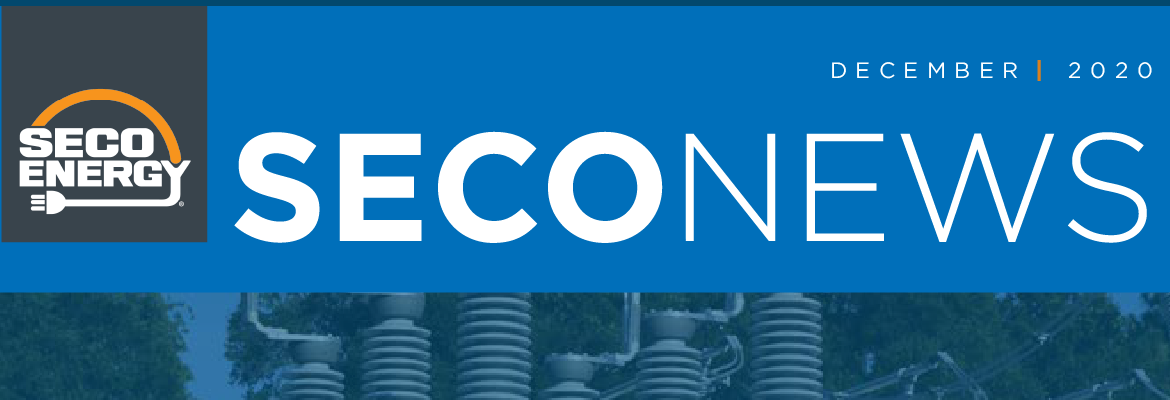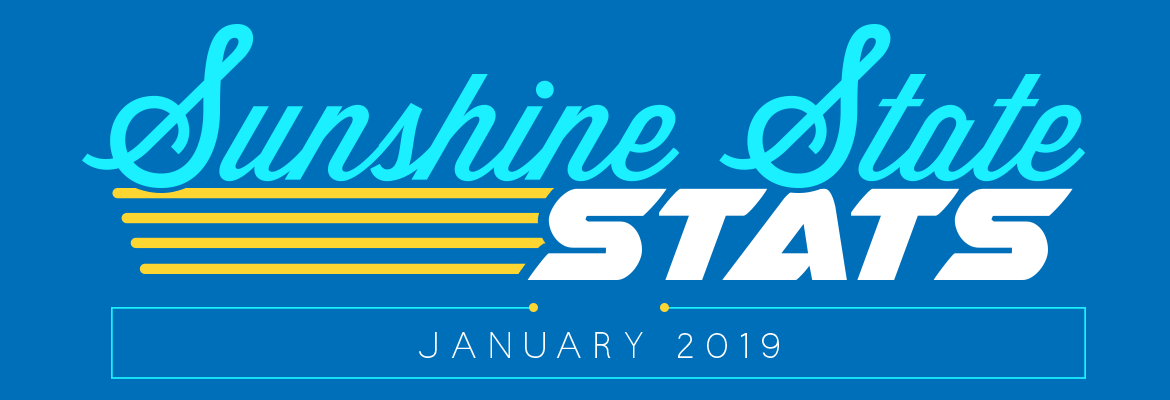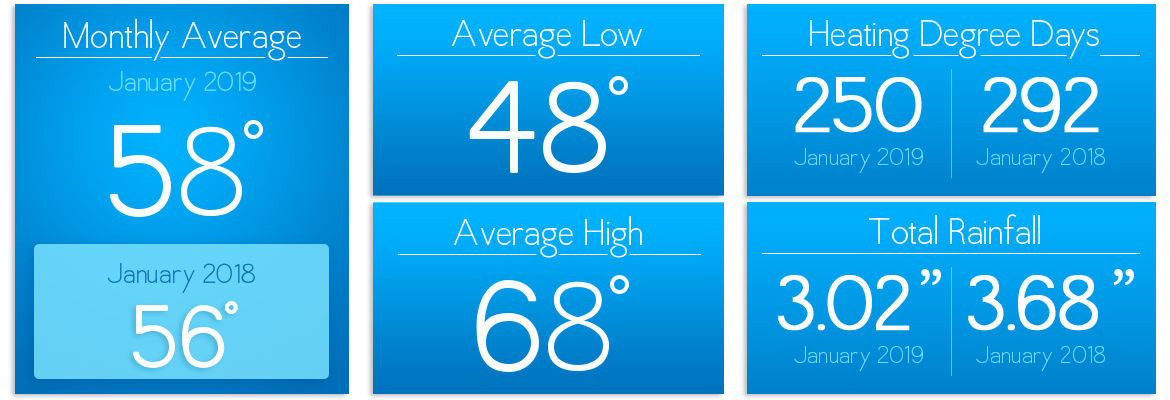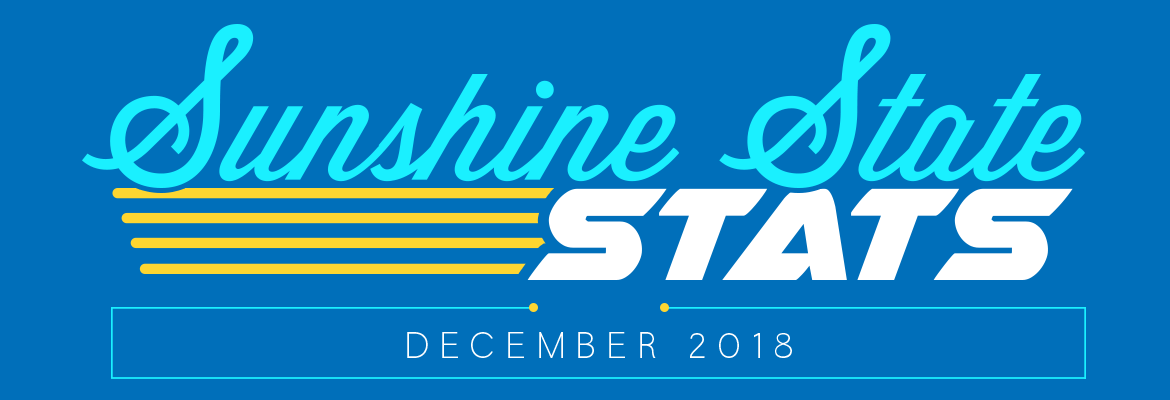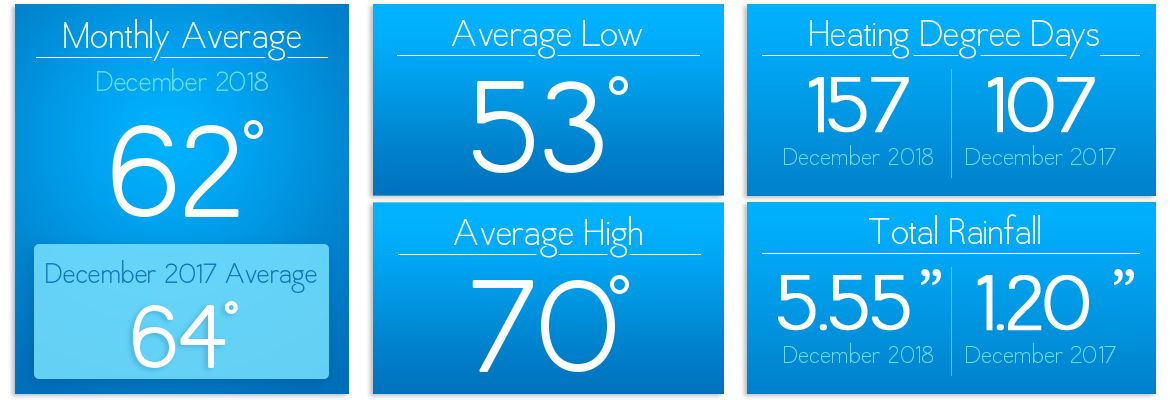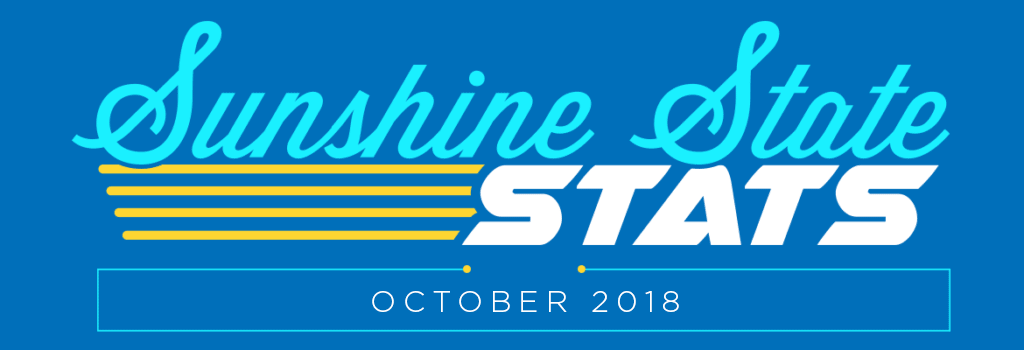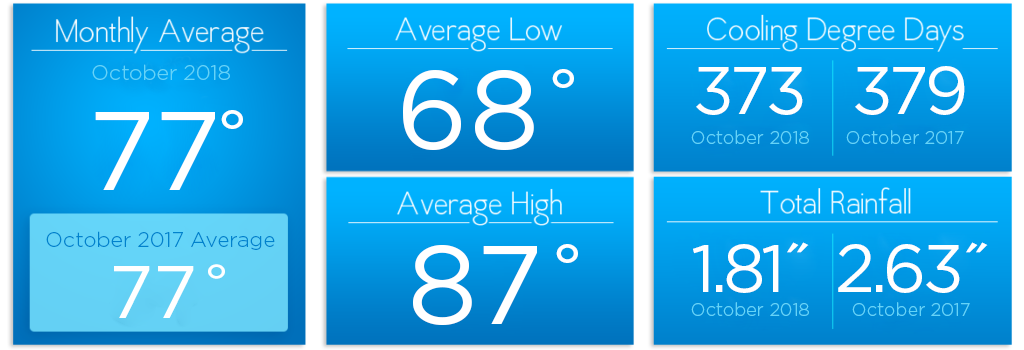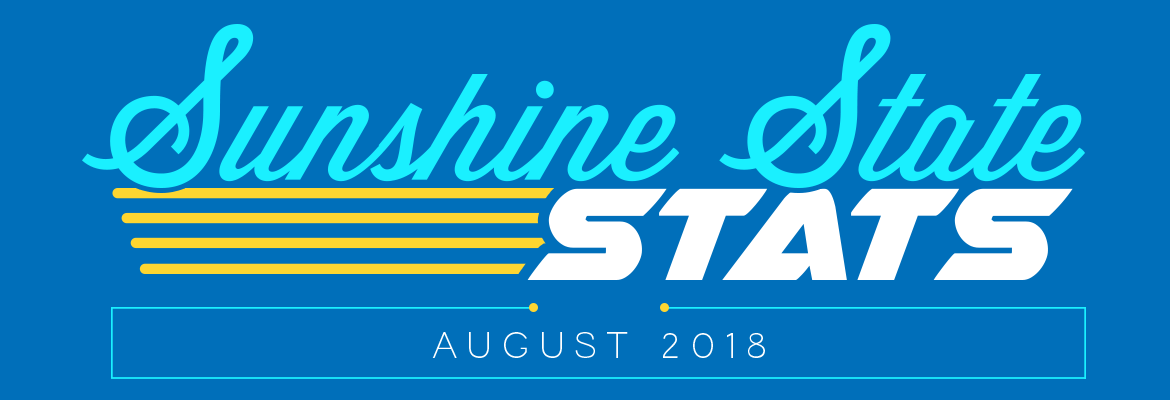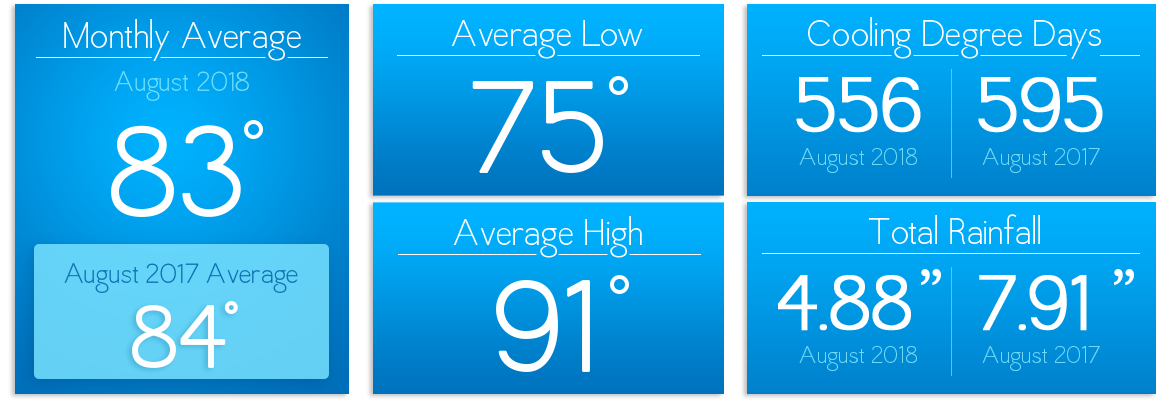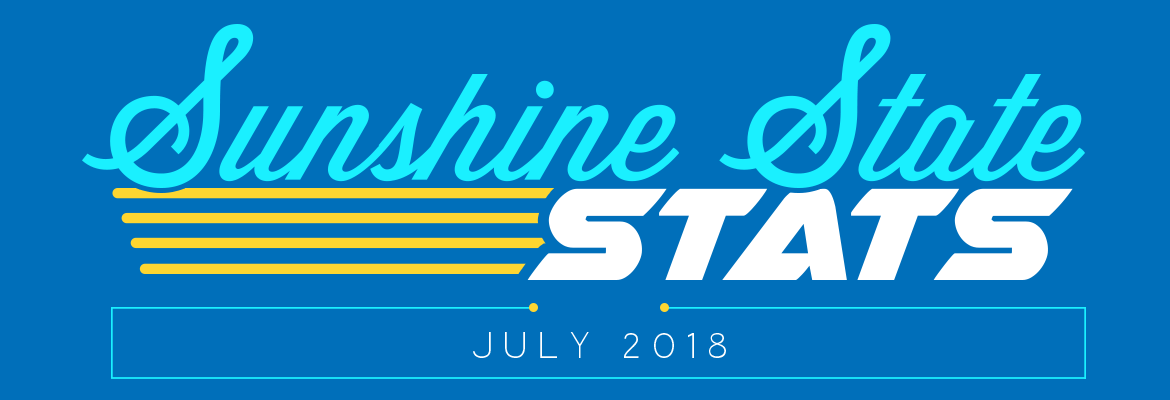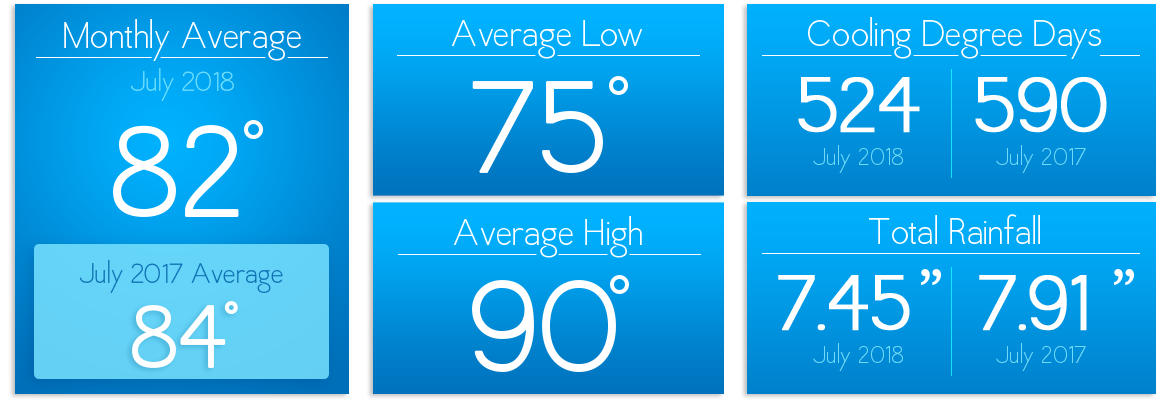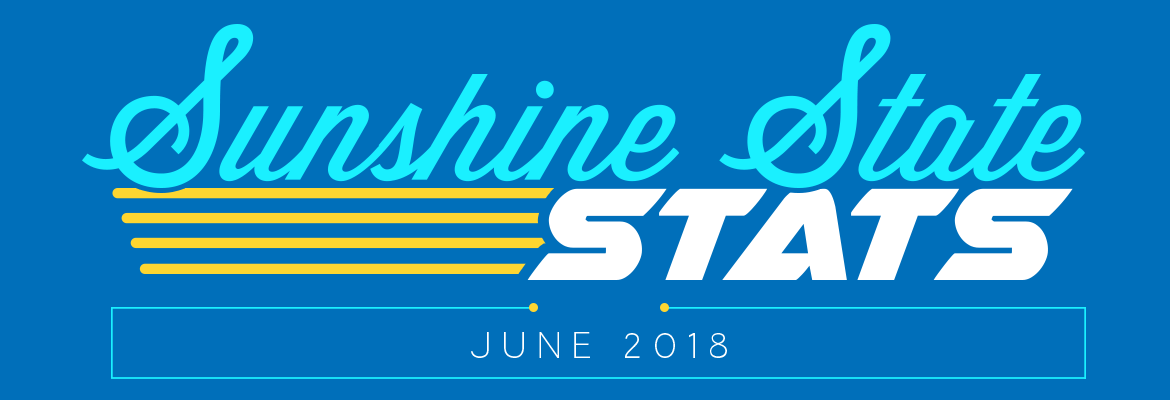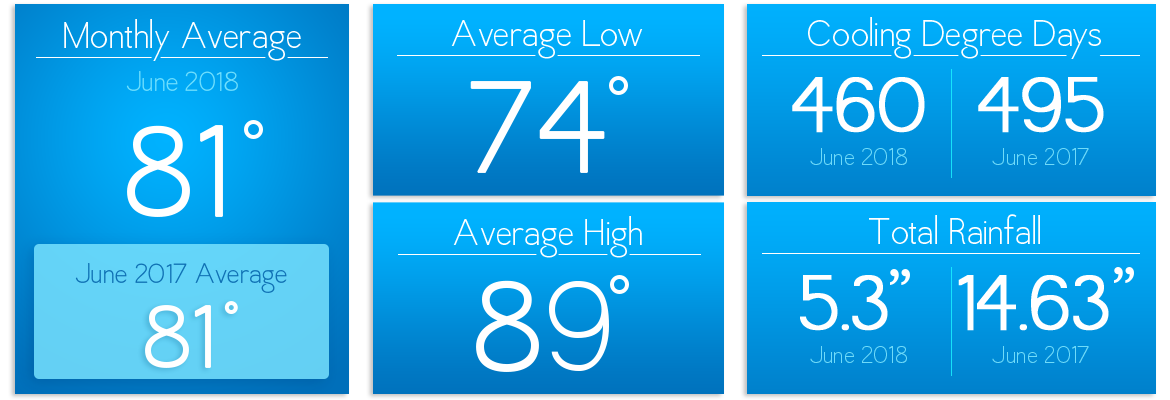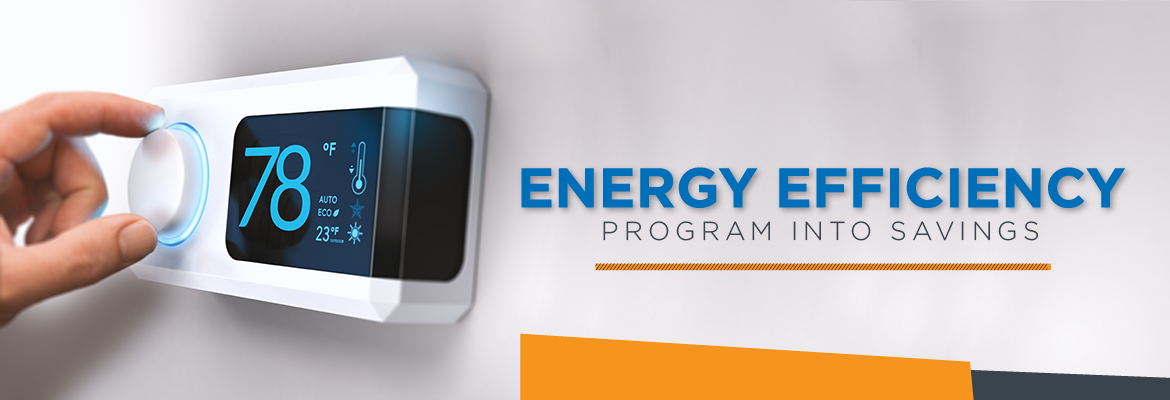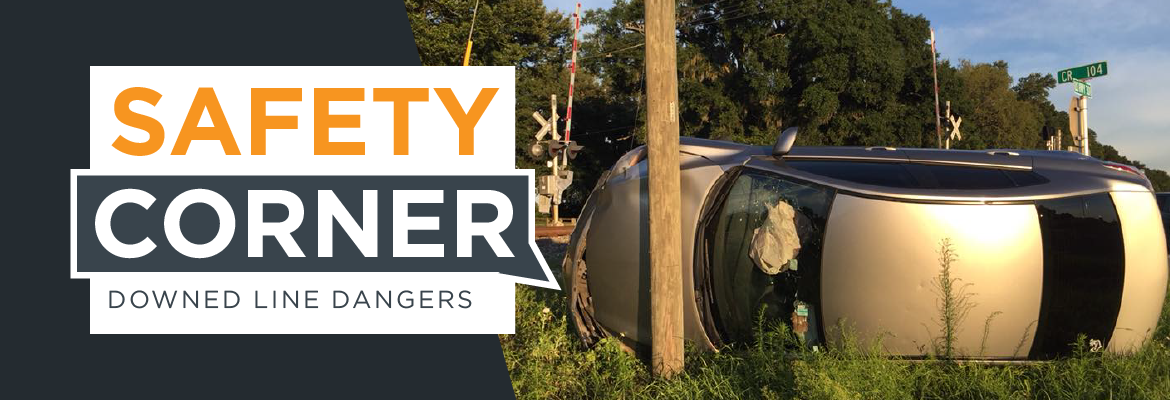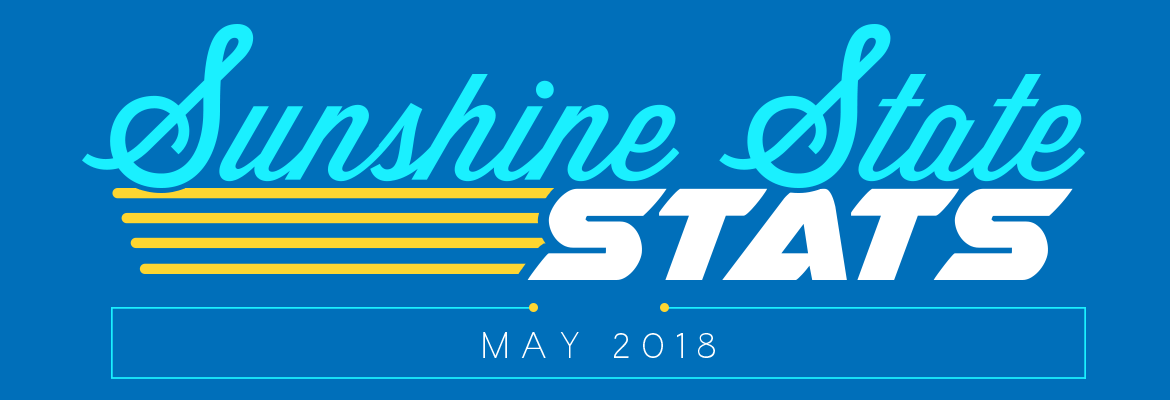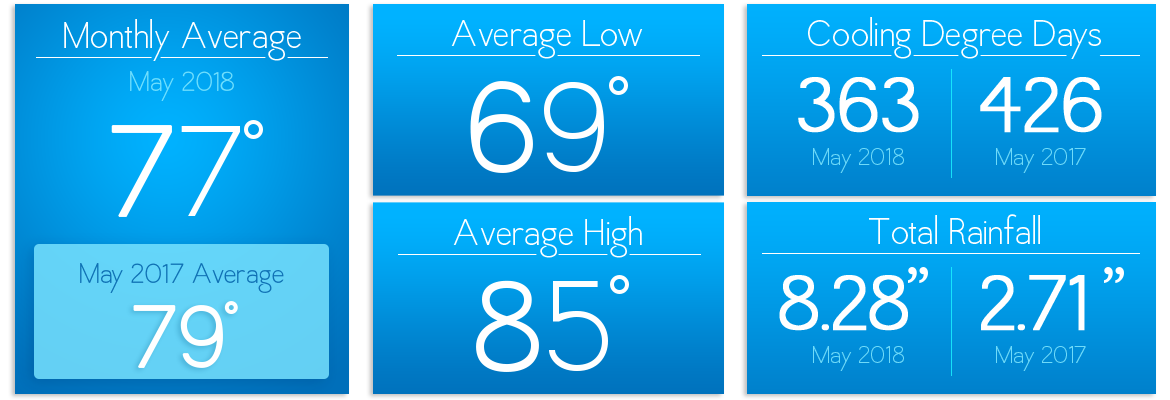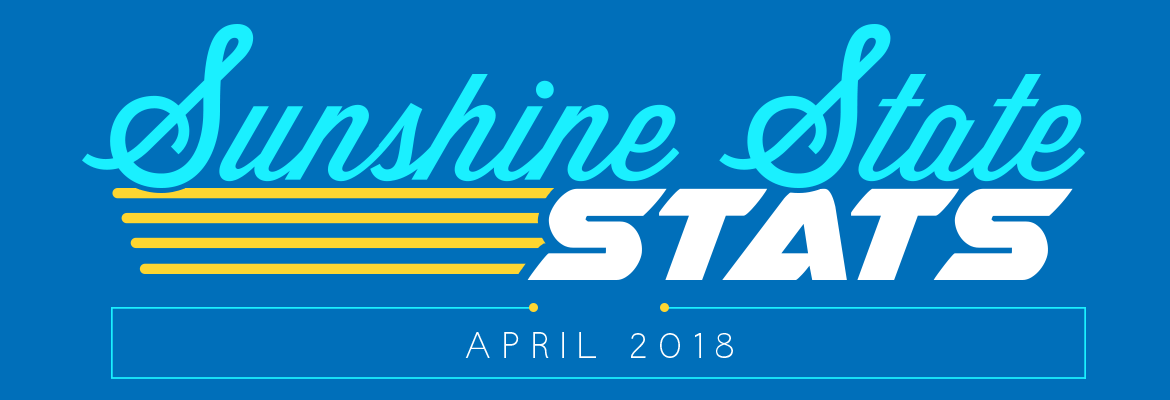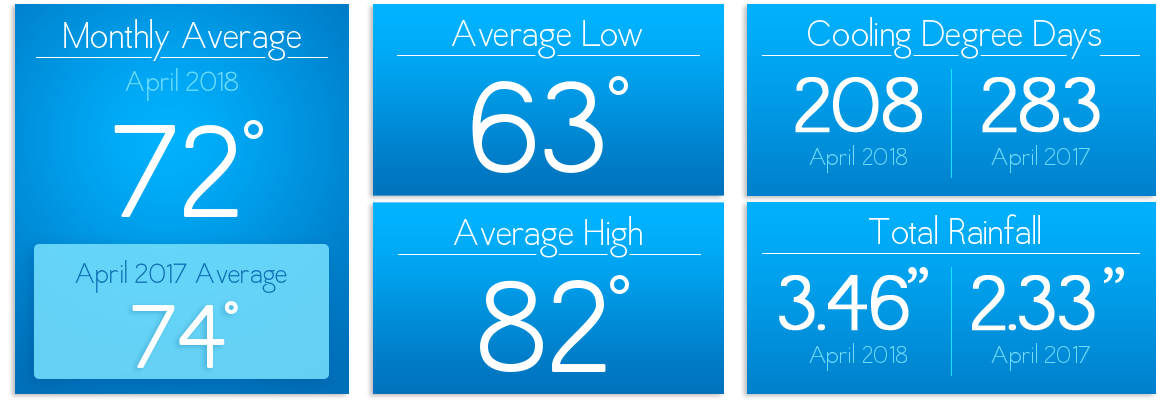SECO News, December 2020
Duncan’s Digest – 2021 United Way Pledge Drive
SECO Energy employees have been exceptionally generous this year. Their philanthropic spirit is fostered by one of our Cooperative Principles: Concern for Community. Many employees, some who are not members themselves, have joined me in supporting SECO’s Pennies from Heaven charitable fund. Employee and member donations to Pennies from Heaven have funded member bill payment assistance and provided funds for local food banks experiencing critical shortages.Employees have also donated generously to our yearly Toys for Tots donation drive.
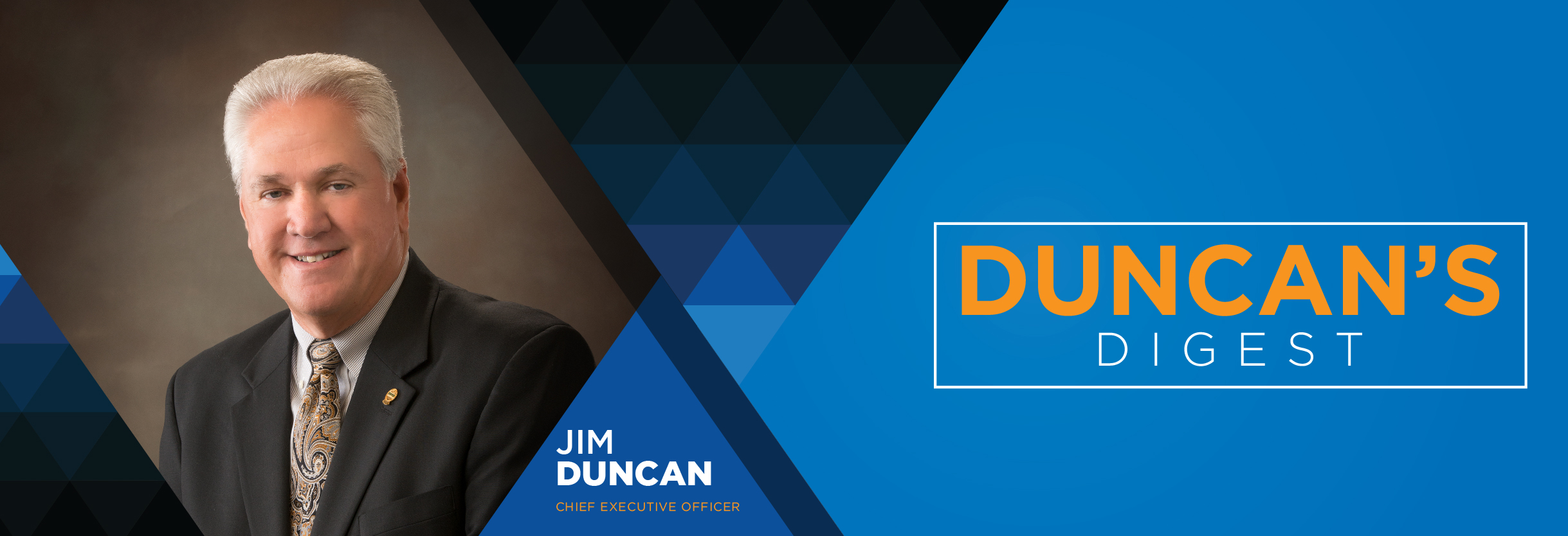
SECO employees recognize that local community help is needed year-round and not only during the Christmas season. For this reason, employees take part in an annual employee-funded United Way Pledge Drive. This year has been challenging for some local families who have struggled through the COVID-19 pandemic and resulting shutdown. The need may well extend into next year.
For our 2021 United Way Pledge Drive, employees willingly pledged $61,433 to United Ways in ten local counties. This donation makes a big difference in the lives of local families. SECO’s 400+ employees live in or near the counties we serve, and employees choose the county where their donated dollars will benefit.
The bulk of our employees live in Citrus, Lake, Marion and Sumter Counties, and these counties received the highest dollar amounts in donations. The breakdown by county is:
Lake and Sumter: $29,508
Marion: $20,885
Citrus: $6,023
Other Counties (Gilchrist, Hernando, Levy, Orange, Pasco and Polk): $5,017
Total: $61,433
Join SECO employees in their effort to promote the United Way’s mission to improve lives by mobilizing the caring power of communities to advance the common good. Education, income and health care are United Way’s key focuses. Visit United Way to donate or volunteer.
I am grateful for our employees’ generosity and dedication to our members and the communities we serve. From the SECO family to yours, Merry Christmas and Happy New Year!
Sincerely,
Jim Duncan
Chief Executive Officer

Engage With Electra to Win
Earlier this year, SECO Energy upgraded its phone system to a new, user-friendly interactive voice response (IVR) system. Our virtual agent’s name is Electra, and she is available 24 hours a day, 7 days a week.
Engage with Electra to win! Starting December 1, members who interact with Electra virtually and don’t request a SECO member service representative will be eligible to win a $25 gift card. We’ll draw one winner each week.
Electra is multi-functional. She can answer thousands of calls virtually and save you from waiting on hold for rep assistance.
BILLING INQUIRIES: Ask Electra “What is my balance?” or ask her “What is the due date?” Need more billing information? Electra can answer questions such as “What was my last payment amount?” or “When was my last payment date?”
PAY YOUR BILL: Tell Electra “Pay my bill,” and she will transfer you to our PayNow payment processor. You can pay your bill by phone using a credit or debit card or electronic check without a convenience fee.
PAYMENT ARRANGEMENT*: Ask for a “Payment Arrangement” or an “Extension.” Electra will schedule terms – all without you having to speak with a rep.
DISCONNECT SERVICE: If you’re moving out of SECO’s service area and need to disconnect service, tell Electra to “Disconnect Service.” Please provide Electra with a forwarding address for future Capital Credit returns.
REPORT A POWER OUTAGE/UPDATE OUTAGE NOTIFICATIONS: Call Electra to report a power outage. Say the word “Outage,” and she will guide you through easy prompts to report the outage for you. To update your outage notifications, say “Update Notifications.” If you’re calling from a cell phone, Electra will ask if you want her to text you a link to StormCenter to update your outage notification preferences on your smartphone or tablet.
CHECK OUTAGE STATUS: Electra can give you details on the status of a current outage. Just say “Check Status,” and Electra will provide the crew status, estimated restoration time and outage cause if known.
REPORT AN AREA LIGHT OUTAGE: Find an area light issue? Just locate the pole number, call Electra and say “Report an Area Light Outage.” Read page four to learn how you can report area light outages online 24/7 with SECO Energy’s LightFinder tool on StormCenter.
SERVICE TROUBLE: Experiencing a service problem such as partial power or a wire down? Call Electra and say “Service Trouble.” Electra will automatically create a service trouble ticket.
Call Electra at (352) 793-3801 and let her assist you virtually for a chance to win a $25 gift card each week. Winning account must be active at the time of the drawing. Look for the first month’s weekly winners in February 2021 SECO News.
Good luck!
*Electra can schedule a payment arrangement for eligible accounts only.
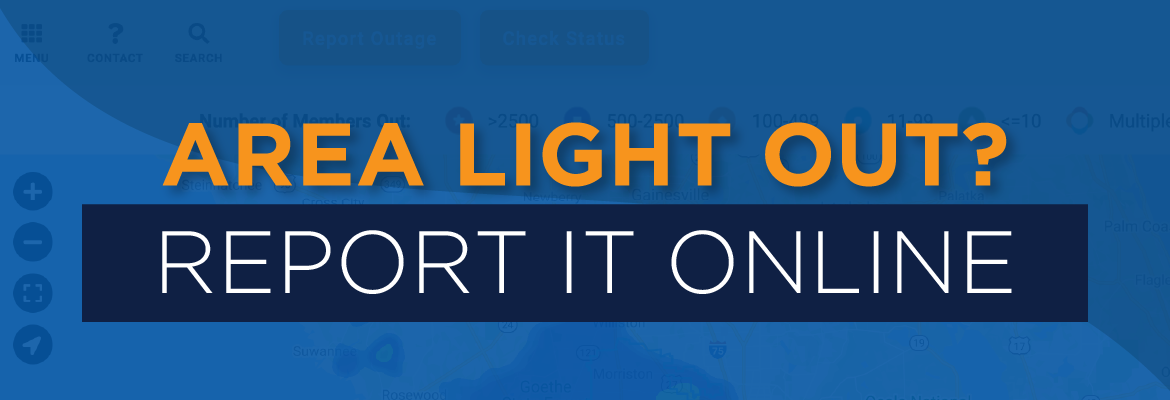
Area Light Out? Report it Online
Need to report a malfunctioning area light? Report a light that is completely off, flickering or staying on during the day using our easy and convenient online tool called LightFinder, which is available through SECO Energy’s StormCenter platform.
Visit StormCenter 24/7 to report power outages, report area light malfunctions, update your communications preferences and more. To report an area light outage, choose the LightFinder tile. Enter the area light pole number or near address in the search bar, then click on the light icon to report the lighting issue. Review the light’s details and add comments if needed. Include your email address in the submission to receive updates about the light’s repair status.
A green light icon indicates there is no known area light issue. When an area light trouble ticket is issued, the icon turns red. Lights represented by an orange icon have been repaired in the last 24 hours. Member-owned lights are shown as a blue icon, and a gray icon indicates an inactive light.
SECO repairs most area light issues in less than 24 hours.
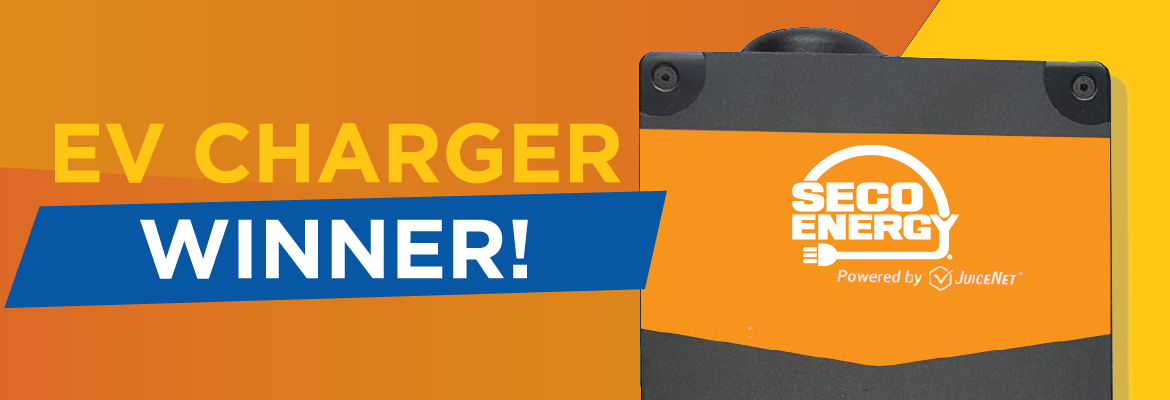
EV Charger Winner
Richard and Jill Nash from Clermont are the November winners of a SECO Energy branded JuiceBox Pro 40 EV Level 2 charger. We’re giving one charger away each month while supplies last. To enter, text “EV” to (352) 320-4500 for a link to enter. Or click on the EV Charger Giveaway homepage banner.
Learn more about the benefits of electric vehicle ownership on our EV website pages. You’ll find an EV savings calculator, information about CO2 reduction, an EV and PHEV model finder and a nationwide charger-finder map. Visit our Electric Vehicles page for more details.
Watch SECO News for next month’s charger winner.
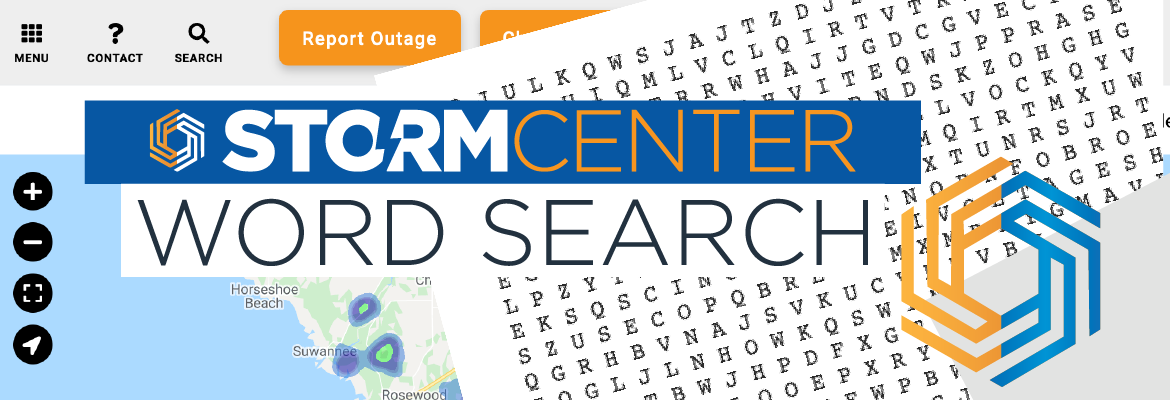
StormCenter Word Search
SECO Energy’s StormCenter outage and communications platform is available online 24 hours a day, 7 days a week. Report power outages, area light malfunctions and update or enroll in outage notifications. Visit StormCenter online.
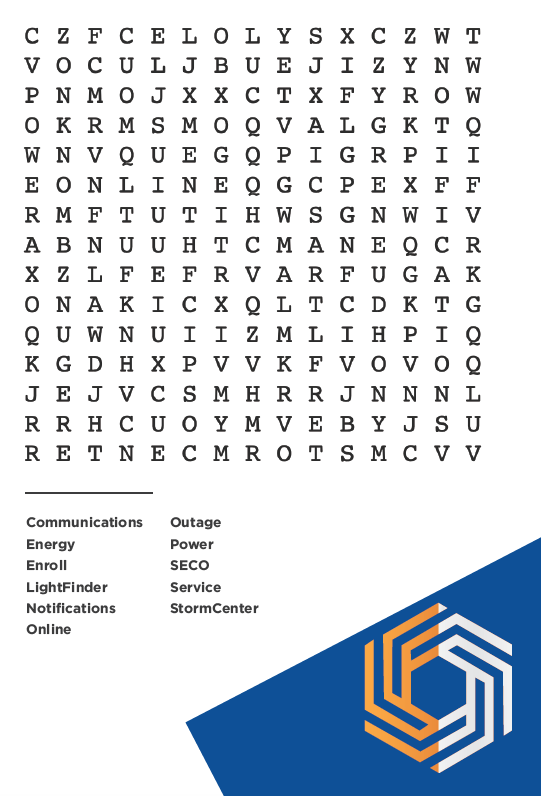
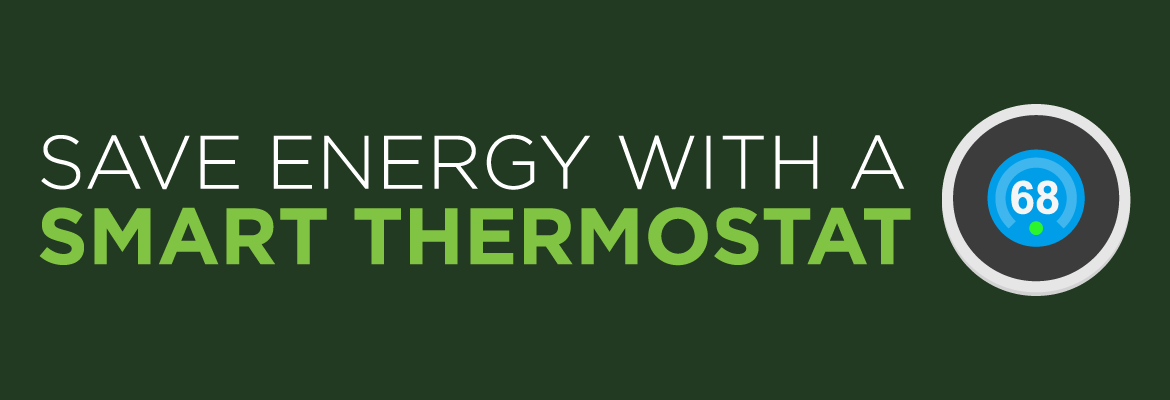
Save Energy With a Smart Thermostat
Give yourself the gift of energy savings this holiday season. Invest in an ENERGY STAR rated smart thermostat to take the guesswork out of indoor temperature settings and to reduce your energy costs.
Smart thermostats are Wi-Fi-enabled devices controlled with your smartphone, tablet, smart speaker or other device connected to the internet. Installing a smart thermostat allows you to schedule your home’s temperatures for comfort. Some units learn your habits and preferences. Smart thermostats will provide you with data on your home’s energy use and other features.
The recommended thermostat setting for energy efficiency is no lower than 78 degrees in the summer and no higher than 68 degrees in the winter. You can save 6 to 8% annually for each degree higher you set the thermostat during the summer and reduce your heating costs by 3 to 5% in winter for each degree you lower the thermostat.
Bright Idea: If you’re going on vacation, set the thermostat to 82 degrees in the summer or 55 degrees in the winter.

Advice from The Old Farmer’s Almanac
Say goodbye, 2020, and hello to 2021. The Old Farmer’s Almanac shares ideas for us to embrace a healthier lifestyle. Make a 2021 resolution to spend at least 120 minutes outdoors each week, schedule doctors’ visits and add online aerobics classes to your workout routine. Give your health a boost by adopting a dog or cat. 92% of dog owners believe their dog makes them healthier, and 85% of cat owners feel the same.
Some of the fun trends for 2021 are restaurants using edible tableware, paperless menus and local farmers selling produce and veggies in traditional supermarkets. Also making a comeback are houseplants and native plant designs in outdoor landscapes.

Surgeo Picks a Winner
Congratulations, Harriette Lowrey from The Villages who won a free one-year Surge MitiGator lease! We chose Ms. Lowrey’s name at random from all members subscribed to SECO Energy’s Surge MitiGator protection on or before October 31.
Take Surgeo’s advice and enroll in SECO Energy’s Surge MitiGator protection to take the bite out of damaging surges and spikes. Our meter-based surge arrester helps prevent unnecessary financial loss by reducing surges BEFORE they enter your home through the meter. The Surge MitiGator is designed to protects your home’s large-motor appliances.
You can lease the MitiGator for only $5.95 plus tax per month plus $25 installation fee. The purchase price ranges from $349 to $399, with installation included. To enroll online or review the MitiGator warranty, visit Surge MitiGator online.
Read the full December 2020 SECO News online.



